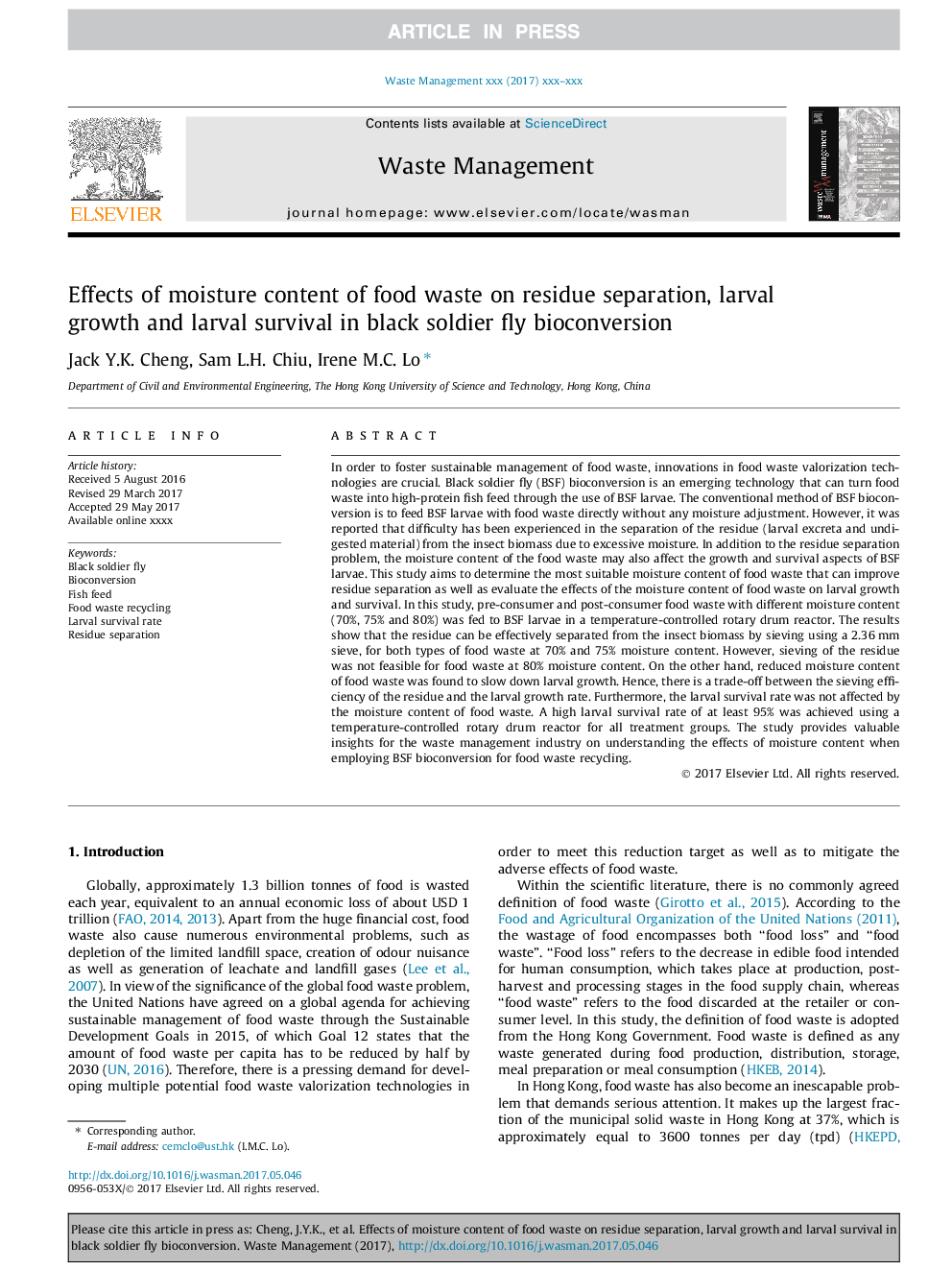| کد مقاله | کد نشریه | سال انتشار | مقاله انگلیسی | نسخه تمام متن |
|---|---|---|---|---|
| 5756667 | 1622619 | 2017 | 9 صفحه PDF | دانلود رایگان |
عنوان انگلیسی مقاله ISI
Effects of moisture content of food waste on residue separation, larval growth and larval survival in black soldier fly bioconversion
دانلود مقاله + سفارش ترجمه
دانلود مقاله ISI انگلیسی
رایگان برای ایرانیان
کلمات کلیدی
موضوعات مرتبط
مهندسی و علوم پایه
علوم زمین و سیارات
مهندسی ژئوتکنیک و زمین شناسی مهندسی
پیش نمایش صفحه اول مقاله

چکیده انگلیسی
In order to foster sustainable management of food waste, innovations in food waste valorization technologies are crucial. Black soldier fly (BSF) bioconversion is an emerging technology that can turn food waste into high-protein fish feed through the use of BSF larvae. The conventional method of BSF bioconversion is to feed BSF larvae with food waste directly without any moisture adjustment. However, it was reported that difficulty has been experienced in the separation of the residue (larval excreta and undigested material) from the insect biomass due to excessive moisture. In addition to the residue separation problem, the moisture content of the food waste may also affect the growth and survival aspects of BSF larvae. This study aims to determine the most suitable moisture content of food waste that can improve residue separation as well as evaluate the effects of the moisture content of food waste on larval growth and survival. In this study, pre-consumer and post-consumer food waste with different moisture content (70%, 75% and 80%) was fed to BSF larvae in a temperature-controlled rotary drum reactor. The results show that the residue can be effectively separated from the insect biomass by sieving using a 2.36Â mm sieve, for both types of food waste at 70% and 75% moisture content. However, sieving of the residue was not feasible for food waste at 80% moisture content. On the other hand, reduced moisture content of food waste was found to slow down larval growth. Hence, there is a trade-off between the sieving efficiency of the residue and the larval growth rate. Furthermore, the larval survival rate was not affected by the moisture content of food waste. A high larval survival rate of at least 95% was achieved using a temperature-controlled rotary drum reactor for all treatment groups. The study provides valuable insights for the waste management industry on understanding the effects of moisture content when employing BSF bioconversion for food waste recycling.
ناشر
Database: Elsevier - ScienceDirect (ساینس دایرکت)
Journal: Waste Management - Volume 67, September 2017, Pages 315-323
Journal: Waste Management - Volume 67, September 2017, Pages 315-323
نویسندگان
Jack Y.K. Cheng, Sam L.H. Chiu, Irene M.C. Lo,